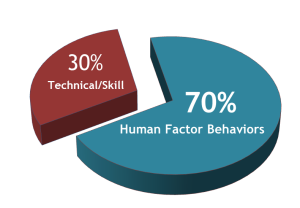
By Richard F. Scheig
Remembering a few pointers will save you time and money in the long run.
Unlocking Successful Hiring with Three Essential Guidelines
Recruiting and hiring the right candidates can be daunting, but it’s also one of the most critical for any organization. Making a poor hiring decision can be costly in various ways. To make the hiring process more effective and reliable, consider the following three essential guidelines:
Guideline #1: Hire What You’re Looking For
A vital step in the hiring process is knowing precisely what you’re looking for in a candidate. Your pre-employment test should be grounded in a comprehensive job analysis involving your best employees currently in the given position. After all, hiring individuals who resemble your best employees can significantly contribute to your organization’s success.
To identify your top-performing employees, start with a peer nomination process. Employees working alongside their colleagues have valuable insights into who excels. Follow this up by having management make the final selections from the pool of nominees, ensuring that employee and managerial perspectives are considered.
When developing your pre-employment test, align it with the behaviors and qualities your best employees exhibit. They should be the gold standard against which all potential hires are measured. This approach increases the likelihood of hiring individuals who can match or exceed the performance of your star employees.
Guideline #2: Prioritize the Human Factor Behaviors
In any job, technical skills are just a part of the equation, often comprising only a fraction of the overall responsibilities. Even in highly technical roles, such as programmer analysts, the technical aspect typically accounts for around 30% of the job’s requirements. Consequently, focusing solely on technical elements, such as skills testing, in your pre-employment tests won’t accurately predict job performance.
It’s crucial to recognize that most of a job’s success hinges on human factor behaviors—skills like communication, adaptability, problem-solving, teamwork, and more. Even the most technically demanding jobs require these human factor behaviors to excel.
Consider this example: Being able to type at a high speed doesn’t guarantee someone will be an excellent secretary. Effective secretaries possess many human factor behaviors that make them successful.
In reality, very few individuals are fired because of technical incompetence. Most terminations result from issues related to these non-technical aspects of the job. Therefore, pre-employment tests must focus on assessing the complete spectrum of human factor behaviors that influence job performance.
To summarize, view technical skills as a minimum requirement for a job. The 70% or more of the job that relies on human factor behaviors is the real differentiator between high and low performers. So, when it comes to hiring, remember the mantra: “Hire for behaviors, train for the skills.”
Guideline #3: Increase Your Selection Ratio
Having a reliable pre-employment test is only one part of the equation. The other crucial factor is the selection ratio, the ratio of applicants to open positions. An ideal situation is one where you have many more applicants than job openings.
In such a scenario, you can thoroughly evaluate each candidate and select the-best-of-the-best. This leads to higher productivity in your workforce and minimizes hiring mistakes. The higher the selection ratio, the more you can benefit from a robust selection tool.
However, in cases where you don’t have the luxury of a large selection ratio, it’s still essential to use pre-employment tests to assess applicants. Even when job openings are limited, this knowledge can significantly inform your training and supervision strategies, ensuring that you can enhance the performance of your workforce.
Conclusion: Elevate Your Hiring Process
Applying these three fundamental guidelines can significantly increase your ability to hire a more productive workforce. By thoroughly defining what you’re looking for, focusing on the full spectrum of job requirements, and maximizing your selection ratio, you’re on your way to making better hiring decisions that will save you both time and money in the long run. Hiring the right people isn’t just about finding the best technical fit; it’s about identifying candidates with the right behaviors and attitudes to thrive in your organization.
For more information, contact Chris Fisher at (800) 999-8582 or visit www.scheig.com.



